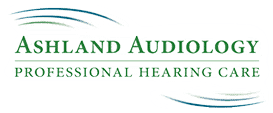Hearing loss is a widespread condition that can have a significant impact on your life. However, with the appropriate diagnosis and treatment, individuals with hearing loss can regain their quality of life and engage fully in the world around them. We will explore the process of diagnosing hearing loss and the steps involved in seeking a comprehensive solution.
The Importance of Seeking Diagnosis
Recognizing the signs of hearing loss is the first step towards regaining control over your hearing health. From struggles with conversations to difficulty hearing in noisy environments, identifying the presence of hearing loss is crucial for preserving your overall well-being. By seeking a diagnosis, you can gain clarity about your condition and access the support and resources you need to address your hearing concerns. Receiving a diagnosis early can help be the first step in preventing further hearing loss or damage in the future.
Initial Assessment: Hearing Health Exam
The process of diagnosing hearing loss typically begins with a comprehensive hearing health exam. During this exam, we will evaluate various aspects of your hearing, including your ability to perceive different frequencies and understand speech. The exam may involve pure-tone audiometry, speech testing, and otoscopy to assess the function of your auditory system and identify any potential concerns.
Conducting Diagnostic Tests
In some cases, additional diagnostic tests may be necessary to evaluate the nature and extent of the hearing loss. These tests may include tympanometry to assess the function of the middle ear, auditory brainstem response (ABR) testing to evaluate the neural pathways involved in hearing, or otoacoustic emissions (OAE) testing to assess the function of the hair cells within the inner ear. These tests provide valuable insights into the specific aspects of your hearing health and guide the development of a tailored treatment plan.
Interpretation of Test Results
Following the completion of diagnostic tests, we will interpret the results and discuss the implications for your hearing health. We will provide a clear understanding of your hearing abilities, any areas of concern, and the available treatment options. Open communication is important during this stage, as it allows you to ask questions, express your concerns, and actively participate in the decision-making process regarding your hearing care. Tests like these will even determine whether you will need to look into hearing aids and which type may be the best for you.
Once a diagnosis has been established, it is important to explore the available treatment options for addressing your hearing loss. We will discuss various solutions based on the specifics of your hearing loss, lifestyle considerations, and personal preferences. From hearing aids to assistive listening devices and communication strategies, there are numerous approaches to improving your hearing and enhancing your quality of life.
Embracing Hearing Wellness
In addition to obtaining a diagnosis and exploring treatment options, embracing hearing wellness involves taking proactive steps to preserve and protect your hearing abilities. This may include the use of hearing protection in noisy environments, incorporating listening breaks, and maintaining regular communication to monitor any changes in your hearing health. By prioritizing your hearing wellness, you can sustain the benefits of your diagnostic journey and enjoy a richer auditory experience. Even after receiving your treatments, hearing aids, or other tools, it is always best to let us know if a change or extra help is needed.

